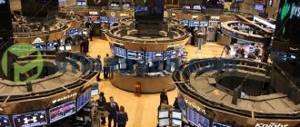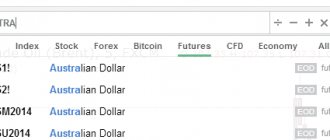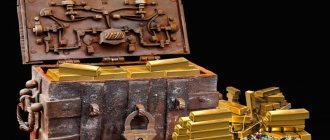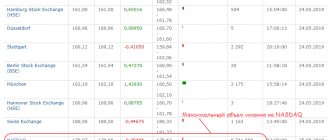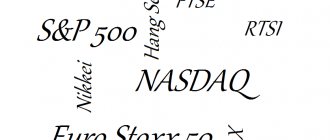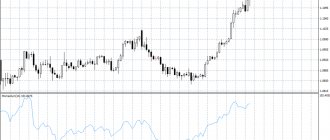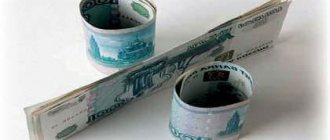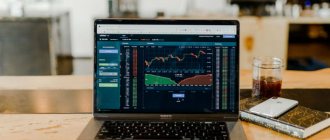Presentation of the London Metal Exchange and its main features
- As the leading exchange for trading non-ferrous metals, the LME sets global prices and reflects market conditions.
- The London Metal Exchange has many huge warehouses, which play the role of guaranteeing timely deliveries under concluded contracts. Warehouses are located in Antwerp, Rotterdam, Genoa, Hamburg, Singapore, USA, Japan and other regions. They are like market makers ensuring constant availability of goods.
- One of the earliest functions of the LME since its inception (1887) was hedging. This way, bidders are protected against the risk of future price changes.
- The official founding date of the London Metal Exchange is January 1, 1887. At that time, the exchange was called Metals and Mining Company and traded only one commodity - copper. Further, the list expanded with zinc, lead and other metals.
- On the London Metal Exchange you can only buy commodities, not shares or other securities of a mining company, steelworks or other supplier. This is the key difference between a commodity exchange (for example, the Chicago Mercantile Exchange) and any stock exchange (London Stock Exchange, New York Stock Exchange, Moscow Exchange, etc.).
- The London Metal Exchange is owned by the Asian holding Hong Kong Exchanges and Clearing (HKEX), the owner of the Hong Kong Stock Exchange (the No. 5 stock exchange in the world in terms of stock market capitalization). The deal was concluded in 2012 for GBR 1.4 billion.
- All contracts on the London Metal Exchange are processed only through members of the LME.
- The London Metal Exchange is the only European exchange that has retained traditional voice trading (film “In the Exchange Pit” / Floored about the work of the Chicago Mercantile Exchange in Russian ).
Electronic trading is carried out through the LME Select platform based on FIX (since February 2001).
- Precious metals (gold, silver, platinum, palladium) are traded on the London Metal Exchange.
- The London Metal Exchange traded plastic in 2005-2011.
About the exchange
| A country | Great Britain |
| Area | London Metal Exchange |
| Base | 1876 (functioning since 1877) |
| Owner | Hong Kong Exchanges & Clearing |
| Goods | Aluminum (Alum), Aluminum Alloys, Steel (HRCc1), Zinc (Zink), Nickel (Nickel), Tin (Tin), Molybdenum (Molybdenum), Copper (Copper), Lead (Lead), Cobalt (Cobalt) |
| Capitalization | $14 trillion |
| Indexes | Copper, Tin, Zink, Lead, Alum, Nickel |
| Website | lme.com |
| Opening hours (Moscow time) | Interoffice telephone bidding 24/7 LME Select 04.00–23.00 Ring 14.40–20.00 |
List of goods on the London Metal Exchange
The London Metal Exchange has a wide range of available goods, divided into the categories of non-ferrous metals, precious metals, etc.
Non-ferrous metals:
- Aluminum;
- Aluminium alloy;
- Aluminum is premium;
- North American aluminum alloy NASAAC;
- Zinc;
- Nickel;
- Tin;
- Copper;
- Lead.
Black metals:
- Steel scrap;
- Steel reinforcement;
- LME Steel HRC FOB China (Argus);
- LME Steel HRC N. America (Platts).
Other base metals:
- Cobalt;
- LME Cobalt (Fastmarkets MB);
- Molybdenum;
- LME Molybdenum (Platts).
Precious metals:
- Gold;
- Platinum;
- Palladium;
- Silver.
London Metal Exchange main commodities:
- Aluminum. Daily trading volume can exceed $12 billion.
- Zinc and copper – up to $3-4 billion.
- Nickel – about $1 billion.
About $14 trillion worth of contracts are concluded annually on the London Metal Exchange. This is more than the annual GDP of China, the second economy in the world ($12.24 trillion in 2021).
Price charts
Gold (rub/gram)
Gold (USD/gram) Gold (USD/gram) Gold (USD\oz) Silver (RUB\gram) Silver (USD\Gram) Silver (RUB\oz) Silver (USD\oz) Platinum (RUB\gram) Platinum ( USD\Gram) Platinum (RUB\Ounce) Platinum (USD\Ounce) Palladium (RUB\Gram) Palladium (USD\Gram) Palladium (RUB\Ounce) Palladium (USD\Ounce)
Prospects for investment in metals
Against the backdrop of high currency volatility, investing in precious metals looks more attractive for the following reasons:
- The most profitable method of saving funds (quote fluctuations are several times less than those of foreign currencies).
- The growth in the cost of precious metals is outpacing inflation.
- Possibility of investment diversification.
- High profitability in the long term (precious metals are one of the most liquid assets).
- Making a big profit under a successful combination of circumstances.
- Availability.
Types of contracts on the London Metal Exchange
There are two main types of contracts on the London Metal Exchange:
- futures;
- options;
including:
average monthly futures
- TAPOs are financially settled options whose payout depends on the monthly average settlement price (MASP) of the contract month;
- TAS (trade-at-settlement) – the ability to make transactions during the day at the market closing price;
- HKEX-London Mini Futures – the main difference between these futures is that transactions are made in Chinese yuan (CNY);
- LMEX – London Metal Exchange futures;
- LMEminis – mini-contracts for the supply of 5 tons of products.
Contract terms:
- volume of goods supplied;
- delivery conditions;
- duration of the contract (immediately, after 3, 6 months, etc.);
- product quality requirements.
History of the exchange
In the 19th century, England, as the main player in the international metal market, received raw materials from Asian, African and Latin American countries. Delivery took up to three months. Due to price instability, both producers and buyers faced risks. Improved communications made it possible to plan deliveries and began to sign contracts for the future.
The beginnings of the LME (London Bullion Exchange) appeared in 1571 (as part of the Royal Exchange). In 1869, trading started 3 months in advance. In 1876, the London Stock Exchange itself was created, which began functioning in 1877.
At first they traded tin and copper. Gold trading took place in periods (1897–1914, 1935–1949, 1968–1989). Lead and zinc were added in 1920. There was no trade during the war. Aluminum appeared in 1978, nickel in 1979. In 2008 there was a transition to steel. In 2010, molybdenum and cobalt appeared among the goods.
Now the London Bullion Exchange performs 3 basic functions:
- Pricing (fixing). When concluding contracts, prices set by the exchange are used as benchmarks.
- Guaranteed supply of physical precious metal. The required amount of precious cargo is “frozen” in warehouses.
- Hedging. Sellers and buyers do not bear risks in the event of sudden price fluctuations, regardless of the reasons that caused them.
Structure of the London Metal Exchange
Trading on the London Metal Exchange is carried out only through its official members. They are divided into 6 categories:
- Ring Dealing Members – this category has all the rights, that is, they have the right to make any transactions available on the exchange.
- Associate Broker Clearing Members - this group is deprived of the ability to conclude open transactions (directly on the platform) during the trading session, but it has all other rights.
- Associate Trade Clearing Members - this group, like the second one, does not have the right to make open trades, but they can settle their trades through the clearing house.
- Associate Broker Members - members of this group have the right only to provide brokerage services, they are not able to personally enter into transactions.
- Associate Trade Members – this group consists of registered clients.
- Individual and Honorary Members are honorary, individual members of the London Metal Exchange, but they are not allowed to trade.
How to make money on the London Metal Exchange
- The first, of course, is the purchase of goods (metals) for its main use (construction of bridges, real estate, production of cars, equipment, etc.).
- The London Metal Exchange has an interesting feature of interest to many traders and investors: on the exchange you can not only buy goods directly, but also make a profit on the price difference (so-called speculative operations). Traders who trade on price differences increase market liquidity, thereby playing a very important role in the operation of the LME.
- Investment of free capital. Often, investors invest in metal contracts with no intention of using it, but only as a valuable asset that can be resold at a profit. In this way, they not only protect capital from inflation, but also, with a competent approach, make a good profit.
- Buying and selling the same product on different exchanges using price differences. This type of operation is called arbitration.
- Credit. Yes, you can also get a loan on the commodity exchange. If on the stock exchange there are bonds, bills and other instruments for this, on the London Metal Exchange the owner of the goods can receive a loan through warrants: he sells the goods, receives money, and at the same time receives the right to repurchase his goods after a set time.
Interesting facts about the exchange
There is no trading in precious metals during LME sessions; all transactions take place strictly through the LBMA.
From 2005 to 2011 there was trade in plastics, but due to low demand it was discontinued.
92% of the world's aluminum volumes are traded through the London Exchange. It is the most traded metal ($12 billion per day).
The London Stock Exchange is the only one in Europe that practices voice trading. ¾ of the world's futures are concluded on the LME (over 200 million lots per year).
It is planned to create a committee to represent the interests of lithium buyers and producers, which will include representatives from Tesla, BASF, Jaguar Land Rover, etc. This will ensure open and reliable pricing. Consultations were held on the launch of lithium futures.
In 2010, the first office outside the UK was opened - in Singapore.
Opening hours of the London Metal Exchange
The London Metal Exchange is open from Monday to Friday, excluding bank holidays. Classic weekends are Saturday and Sunday.
Opening hours: 11:45-17:00, including over-the-counter trading hours: 13:25-14:45, 16:15-17:00.
Electronic trading on LMEselect is available from 01:00 to 19:00.
Inter-office Trading accepts orders by telephone 24 hours a day.
CFD on non-ferrous metals
CFD (Contract For Difference) is a “contract for difference” that allows you to trade financial assets (including futures of gold, silver , palladium, copper, etc.) without owning them, using margin and leverage provided by the broker. CFD allows you to dramatically reduce costs in the form of exchange commissions for each contract, leaving only the spread.
CFD quotes for Brent oil are available from 13 recommended companies in the top league of broker ratings from the Masterforex-V Academy. These are 1. Nord FX, 2. Dukascopy Bank SA, 3. FXPro, 4. Interactive Brokers, 5. Alpari (Alpari), 6. Swissquote Bank SA, 7. OANDA (Oanda), 8. FXCM, 9. Saxo Bank ( Saxo Bank), 10. FOREX.com, 11. FIBO Group, 12. Fort Financial Services (FortFS), 13. Finam (Finam).
Other largest stock and commodity exchanges in the world
- USA and Canada : NYSE (New York), NASDAQ (New York), Toronto Stock Exchange (Toronto, Canada), Chicago Mercantile Exchange (Chicago, USA),
- Europe : Euronext (Paris), London Stock Exchange (UK), Frankfurt Stock Exchange (Germany), Swiss Stock Exchange (Switzerland), OMX Nasdaq Nordic Exchange (Stockholm, Sweden), Madrid Stock Exchange (Spain), Moscow Exchange MOEX (Russian Federation) ), Oslo Stock Exchange (Norway)
- Asia : Tokyo Stock Exchange (Japan), Shanghai Stock Exchange (PRC), Hong Kong Stock Exchange (PRC), Shenzhen Stock Exchange (PRC), Bombay Stock Exchange (Bombay, India), National Stock Exchange of India (Bombay, India), Korea Stock Exchange (Busan, South Korea), Taiwan TWSE Exchange (Taiwan), Singapore Exchange (Singapore), Saudi Stock Exchange (Saudi Arabia), Stock Exchange of Thailand (Thailand), Tel Aviv Stock Exchange (Israel), Istanbul Stock Exchange (Turkey)
- Latin America : Sao Paulo Stock Exchange (Brazil)
- Australia and New Zealand : Australian Stock Exchange (Sydney, Australia), NZX New Zealand Exchange (Wellington, New Zealand)
- Africa : Johannesburg Stock Exchange (South Africa),
Is everything clear and accessible in this Masterforex-V wiki article? If yes, leave your review under this article and share on social networks.
Sincerely, wiki Masterforex-V , free (school) and professional training courses Masterforex-V for working on Forex, stock, futures, commodity and cryptocurrency exchanges.

